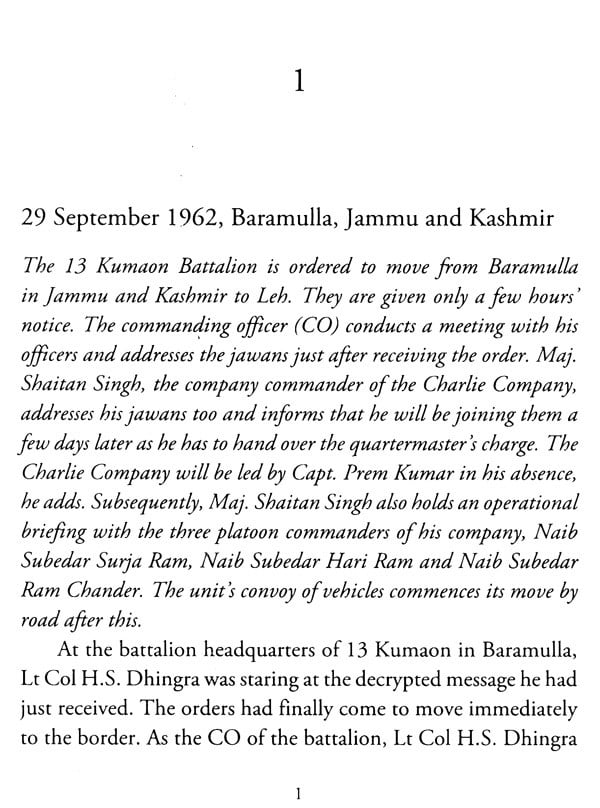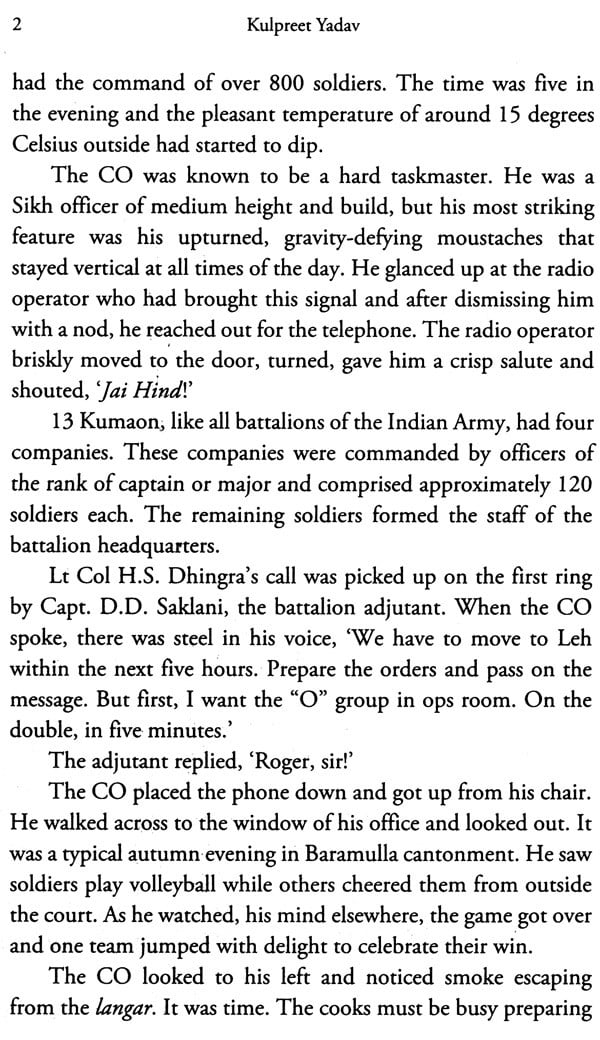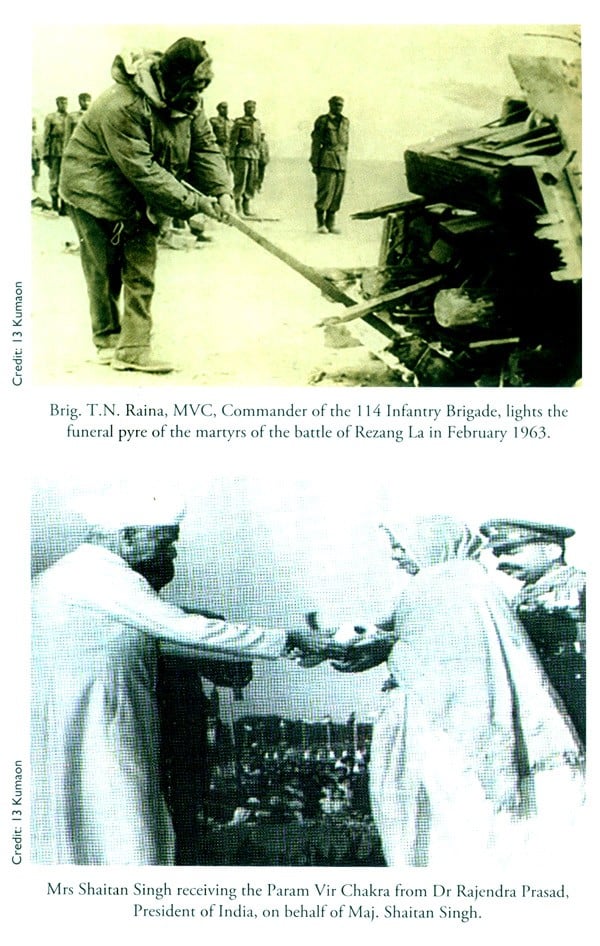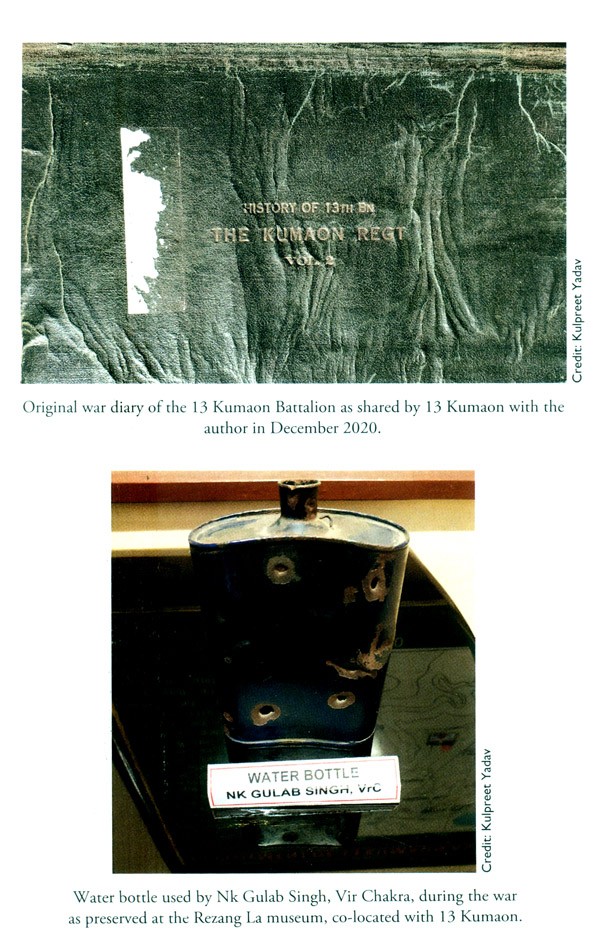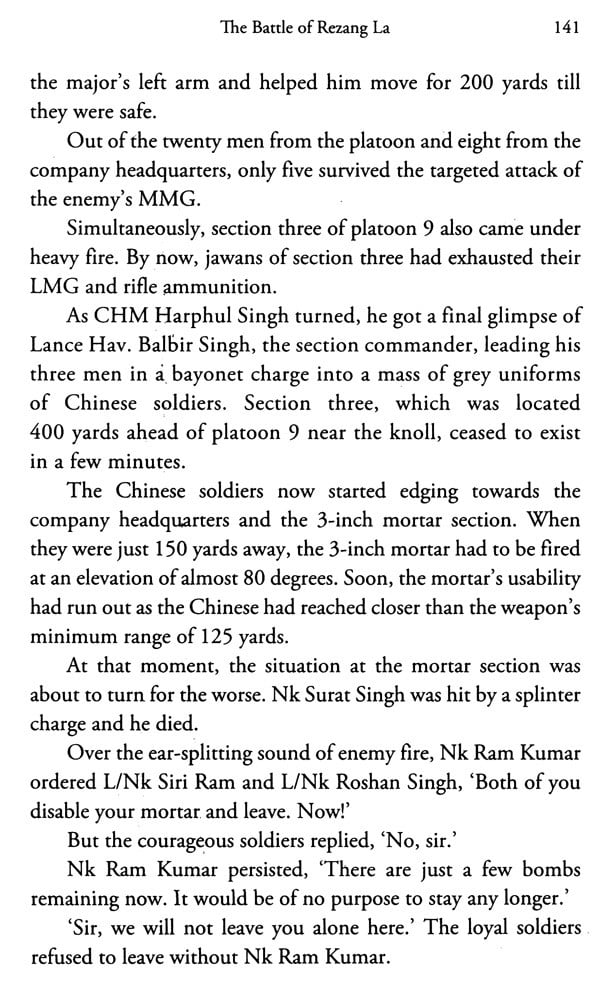
The Battle Of Rezang La
Book Specification
| Item Code: | TZZ609 |
| Author: | Kulpreet Yadav |
| Publisher: | Penguin Random House India Pvt. Ltd. |
| Language: | English |
| Edition: | 2021 |
| ISBN: | 9780143452058 |
| Pages: | 194 (Throughout Color and B/w Illustrations) |
| Cover: | PAPERBACK |
| Other Details | 8.00 X 5.50 inches |
| Weight | 170 gm |
Book Description
The Indian search party, which visited the battlefield on 10 February 1963, made a startling discovery-the frozen bodies of the men who had died were still) holding guns in their hands, having taken bullets on their chests. One PVC (Param Vir Chakra), eight VCs (Vir Chakras), four SMs (Sena Medals) and one M-in-D (Mentioned-in-Dispatches) were awarded to the soldiers of the Charlie Company, making it one of the highest decorated companies of the Indian Army to this day. The velour of the Charlie Company not only successfully stopped China's advance, but it also resulted in the Chushul airport being , saved, thereby preventing a possible Chinese occupation of the entire Ladakh region in 1962. According to reports, a total of 1300 Chinese soldiers were killed trying to capture Rezang La. The Charlie Company was an all-Ahir company, and most of the soldiers who fought the battle at 18,000 feet came from the plains of Haryana.
The Battle of Rezang La is their story.
I am delighted to see that the book lays a strong foundation of this epic battle that till now the nation has been deprived about knowing and discussing.
This story of the battle of Rezang La is the stuff legends are made of. 13 Kumaon, which is an all-Ahir battalion of Kumaon Regiment, fought valiantly, transforming a sure-shot debacle into one of the fiercest last stands in the history of the Indian Army, or for that matter, the entire world. The fact that just 120 infantry soldiers succeeded in stopping the largest standing army of the world is testimony to the courage, professionalism and commitment of these soldiers.
They not only refused to move back even an inch, but when their ammunition got over, these brave soldiers jumped out of their trenches and went headlong into the enemy using their bare hands and bayonets. They were so highly motivated and fearless that even the Chinese acknowledged their bravery and velour.
Three months after the war, when the mortal remains of these brave hearts including their company commander were found, it was seen that every one of them had taken bullets on their chest (not one was shot in the back). Brig. T.N. Raina had this to say about their bravery', 'You rarely come across such examples in the annals of military history, when braving such heavy odds, the men fought till the last bullet and the last man.
Certainly, the battle of Rezang La is a shining example.' Indeed, the odds were heavily against these soldiers; they were hugely outnumbered, out-gunned and out-weathered, but each one of them fought like a true hero and proved to the world that determination, grit and belief are much bigger than any material odds.
The story of Rezang La needs to be told to all Indians, particularly the young generation who do not have access to any authentic and realistic story of this amazing saga of velour and courage? Everyone should know the cost that was paid to protect India in 1962. Today, we have not one but three memorials to honor and remember the soldiers who fought this epic battle.
There's one near Rezang La itself, one in Reward (Haryana) and another in Gurgaon (Haryana).
One thing that was constant during these vacations was the mention of the battle of Rezang La, where, led by Maj. Shaitan Singh, the soldiers belonging to the Charlie Company of the 13 Kumaon Battalion had fought a valiant battle against the Chinese. Almost everyone I knew, including my own family, had at least one close or distant relative, if not more, who had defended India and laid down his life in this battle. In those days, women used to sing raginis (folk songs) of velour-they still do-and everyone was proud of the war heroes of Rezang La.
And yet, after returning from my vacation, year after year, as I mentioned this battle to my classmates in Kendriya Vidyalaya, Sec. 31, Chandigarh, where I studied, no one had heard of it.
Things didn't change after I joined Now rosjee Wadi a College in Pune. The students too had never heard of the battle of Rezang La. At that time, I thought this was okay. After all, India is a large country.
In 1991, I got into the naval officers academy and started to train to become an officer. I was looking forward to reading about famous Indian and world battles. But, here too, whenever I spoke to my instructors about Rezang La, no one had heard of this brave last-man-last-bullet stand of our soldiers. Subsequently, in all the units I served, on land or at sea, I didn't meet a single officer or jawan who had at least some idea about this battle. This disappointed me. Bur, by now, I understood the reasons for this lack of information. The debacle of 1962, where a Nehru-led India lost humiliatingly to China, was not allowed to be discussed in public discourses: books, debates, seminars or school lessons never talked about it. And therefore, not surprisingly, the story of the men who died fighting against all odds was simply brushed aside. After all, there were army generals to be protected, ministers to be kept away from public loathing and the image of a political establishment kept intact to the extent possible.
Book's Contents and Sample Pages
